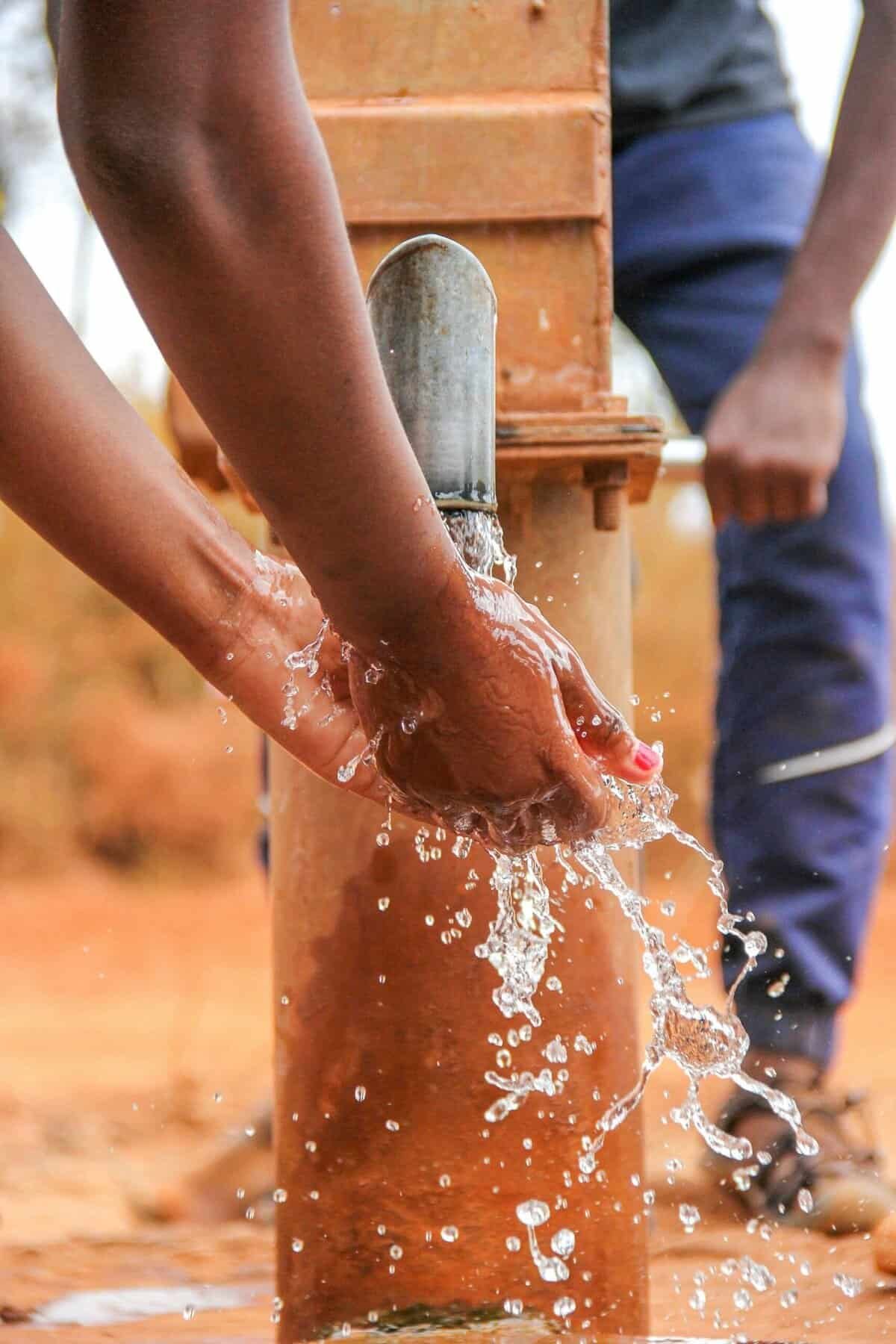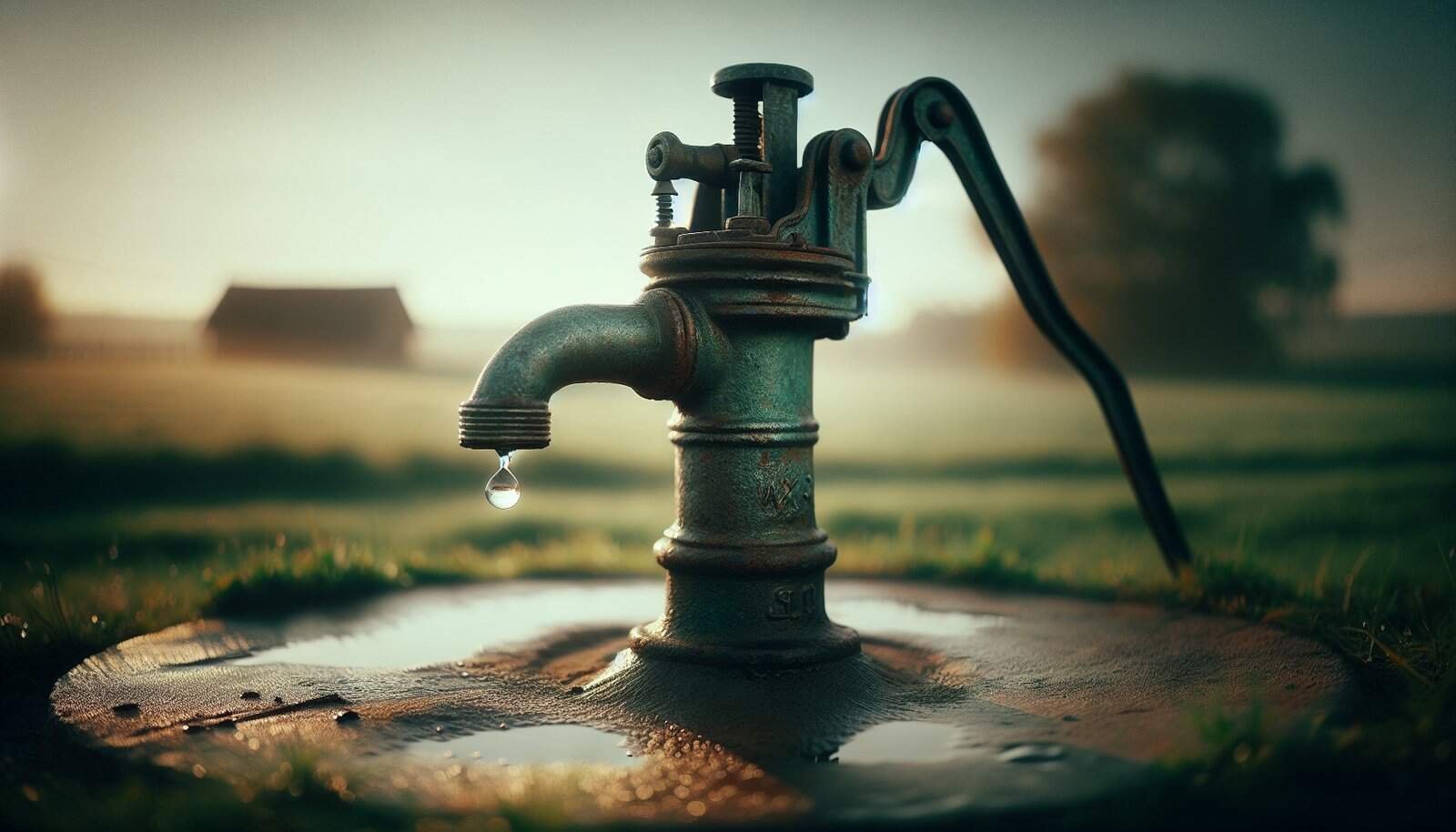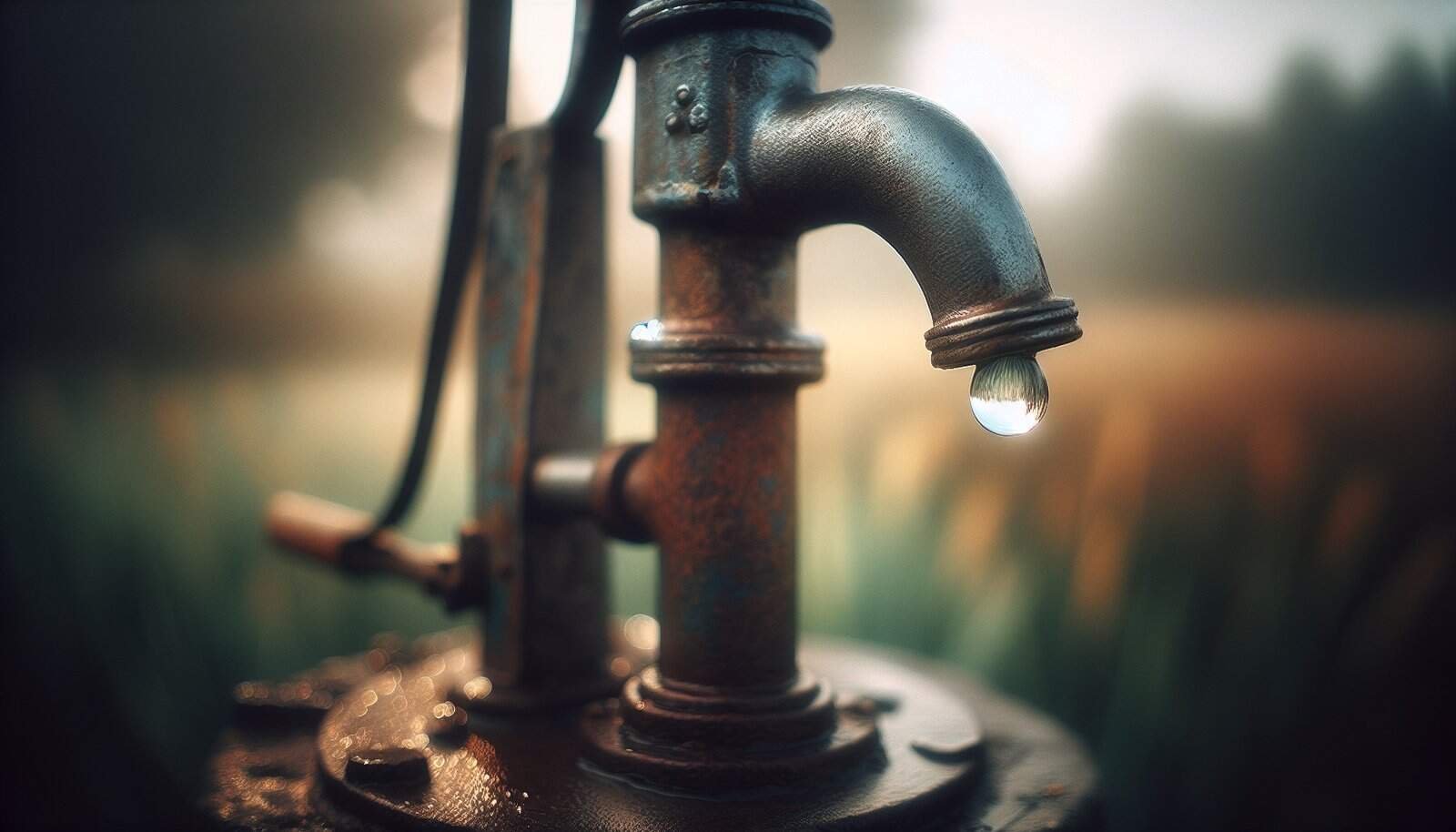Have you noticed odd tastes, smells, stains, or changes in water pressure from your tap recently?

What Are The Most Common Well Water Problems?
You rely on well water for drinking, cooking, bathing, and gardening, and when something is off you want clear answers and practical fixes. This article explains the most common well water problems, what causes them, how to recognize them, how to test for them, and what treatment or prevention options you can use. You’ll get clear, actionable information so you can protect your health and your home.
Why well water problems matter to you
Well water doesn’t pass through municipal treatment, so its quality depends on local geology, nearby land use, well construction, and maintenance. You should understand common issues so you can act quickly when something changes, avoid health risks, and keep your plumbing and appliances running smoothly.
How to know if your well water has a problem
You’ll usually notice well water problems through changes you can see, smell, or taste, or through plumbing and appliance issues. Paying attention to early signs lets you test and treat before problems worsen.
Common observable signs
If you see staining on fixtures, detect strange odors (like rotten eggs), notice cloudy or discolored water, or experience unusual tastes, those are clear signals to test. Changes in water pressure, increased septic odors, or sudden cloudy water after rainfall also indicate potential contamination.
Health and system clues
If household members develop gastrointestinal illness, or if appliances and pipes clog or corrode more quickly, you should suspect water quality issues. Recurrent problems with your well pump or motor may also indicate deeper issues such as siltation or well collapse.
The most common contaminants and problems
Below is a table summarizing the typical well water problems, common causes, typical symptoms, and general treatment approaches. You’ll find details and examples in the sections that follow.
| Problem | Common Causes | Typical Signs | Typical Treatment / Prevention |
|---|---|---|---|
| Bacterial contamination (total coliform, E. coli) | Surface runoff, septic system failure, faulty well cap, flooding | Cloudy water, bad taste/odor, GI illness in household | Shock chlorination, fix source (septic/ drainage), repair wellhead, regular testing |
| Nitrates/Nitrites | Agricultural runoff, septic leakage, fertilizers | Blue-baby risk, general health risk for infants, no obvious taste | Identify source, deepen well or treat with ion exchange/RO, protect wellhead |
| Iron & Manganese | Natural geology, anaerobic conditions | Brown/orange (iron) or black (manganese) staining, metallic taste | Aeration/oxidation + filtration, water softener for manganese, oxidation media |
| Hydrogen sulfide (rotten egg smell) | Bacteria acting on sulfur compounds or dissolved gas in aquifer | Sulfur/rotten egg odor, blackened fixtures with iron or manganese | Aeration, activated carbon, manganese greensand filters, chlorination |
| Hard water (high calcium/magnesium) | Natural mineral content in aquifer | Scale buildup, soap scum, dry skin/hair, decreased appliance efficiency | Water softener (ion exchange), template-assisted crystallization, periodic descaling |
| Turbidity / Sediment | Well casing damage, shallow wells, surface water intrusion | Cloudy water, visible particles, clogged filters | Sediment filters, well rehabilitation, proper wellhead grading |
| Low pH (acidic) | Natural geochemistry, acid rain | Metal corrosion, metallic taste, leaching of lead/copper | Neutralization (calcite, soda ash), corrosion control |
| High pH (alkaline) | Natural geochemistry | Scale formation, slippery feel, film on surfaces | Acid injection systems, blended neutralizers |
| Arsenic | Natural geologic sources, mining areas | No taste/odor; long-term cancer risk | Reverse osmosis, adsorption media (iron oxide), blending, alternative source |
| Lead | Corrosion of plumbing, old fixtures, solder | No taste/odor; severe health risks for children | Replace plumbing, corrosion control, point-of-use RO |
| Volatile organic compounds (VOCs) & pesticides | Industrial spills, agricultural chemicals | Chemical taste/odor, health risks | Granular activated carbon, air stripping, identify and remediate source |
| Salt / high sodium | Seawater intrusion, road salt, irrigation | Increased conductivity, taste, corrosion | Reverse osmosis, blending with clean source, monitor overuse of irrigation |
| Radon | Natural release from rock (especially in granite areas) | No taste/odor; increased lung cancer risk | Aeration systems, granular activated carbon for low flows |
Bacteria and microbial contamination
Bacterial contamination is one of the most immediate and common concerns because it can cause acute illness. You’ll want to test and act quickly if you suspect bacteria.
What you should know about bacterial contamination
Total coliforms are indicator organisms used to signal possible fecal contamination. E. coli presence is a stronger indicator of recent fecal contamination and potential pathogens. If your well tests positive, you should treat the system and investigate sources of contamination.
How bacteria get into wells
Bacteria commonly enter through improper well construction, a damaged or missing sanitary seal, surface runoff after heavy rain, nearby septic failures, livestock operations, or flooding. Shallow wells are especially vulnerable.
Immediate steps you should take if bacteria are detected
You should stop using the water for drinking and food preparation until treated. Use bottled water or boil water for at least one minute (longer at high elevations). Have the well professionally disinfected (shock chlorination), fix any structural issues, and retest after treatment.

Nitrate and nitrite contamination
Nitrates are a common problem near agricultural areas and places with septic systems. They’re colorless and tasteless, so testing is essential.
Why nitrates are a concern for you
High nitrate concentrations are dangerous to infants (blue baby syndrome) and may carry other health risks for pregnant women. Nitrates often come from fertilizers, animal manure, or failing septic systems.
How to detect and address nitrates
Test annually, and more often if you have known sources of nitrates nearby or if a household member is pregnant or has infants. Treatment options include reverse osmosis, ion exchange, or drilling a deeper well to access a cleaner aquifer. Preventative measures include proper septic maintenance and controlling fertilizer application near the well.
Iron and manganese
Iron and manganese are mineral issues common in many well waters, and they’re not usually a health hazard at typical concentrations, but they can cause aesthetic problems and damage.
What iron and manganese do to your water and home
You’ll see rusty (brown/orange) stains from iron and black stains from manganese. Water may taste metallic, appliances can suffer buildup, and laundry may be stained.
How to treat iron and manganese
Depending on whether iron is dissolved (clear-water iron) or particulate (red water iron), you may use aeration followed by filtration, potassium permanganate oxidation with greensand filtration, or water softeners for low concentrations. Professional water testing will help determine the most effective method.

Hydrogen sulfide (rotten egg smell)
If your water smells like rotten eggs, hydrogen sulfide gas or sulfur-reducing bacteria are likely present. The smell is often one of the first things you notice.
What causes that smell and why it matters
Hydrogen sulfide can form from natural geologic sources or from bacterial action on sulfur-containing minerals. The gas corrodes plumbing, can stain fixtures, and makes using water unpleasant.
How to remove the smell
Aeration systems are effective for gas removal in many cases. Activated carbon filters can remove low concentrations, while oxidizing filters and shock chlorination may be appropriate for bacterially produced sulfide.
Hard water and scale
Hard water is caused by dissolved calcium and magnesium and is very common in groundwater. You’ll feel the effects in your household appliances and skin.
How hard water affects you
You’ll notice soap not lathering well, scale buildup on heating elements, shorter appliance lifespans, and more frequent need for descaling. Dry skin and hair issues can be related to hard water too.
Treatment options for hard water
Ion-exchange water softeners are the standard treatment, replacing calcium and magnesium with sodium or potassium. Salt-free conditioners and physical water conditioners are alternatives that reduce scale but don’t truly soften water chemically. Choose based on your water chemistry and household needs.

Turbidity and sediment
Turbidity (cloudy water) and physical sediment can signal well integrity problems or surface water intrusion. You’ll notice particles, cloudy water, or rapid sediment accumulation in filters.
Why you should care about turbidity
Turbidity can harbor microorganisms and cause filter clogging. Sudden increases after heavy rain or pump repairs often mean surface water is entering the well.
Solutions to turbidity and sediment
Install sediment pre-filters of appropriate micron size, evaluate and repair the well casing or cap, and ensure good surface drainage and wellhead protection to prevent future intrusion. In some cases, well redevelopment or deepening is needed.
pH and corrosion (acidic water)
If your water is acidic, it can corrode pipes and fixtures and cause metals like lead and copper to leach into the water, presenting serious health risks.
Signs of corrosive water
You may notice metallic tastes, blue or green stains, pinhole leaks in copper pipes, or elevated metal levels on testing.
How to treat acidic water
Neutralization systems use calcite or soda ash to raise the pH. Corrosion control can also involve adding phosphate inhibitors to coat pipes and testing for lead and copper regularly. Fix plumbing materials that are vulnerable.

Arsenic, radon, and other naturally occurring contaminants
Some contaminants come from natural geology and are colorless, odorless, and tasteless. They often require targeted testing and specialized treatment.
Why you should test for these contaminants
Arsenic can cause long-term cancer risks; radon increases lung cancer risk if inhaled from water aerosols; and other trace metals (like uranium) can present chronic health issues. You should test if you’re in an area known for these contaminants or if you want comprehensive peace of mind.
Treatment approaches
Arsenic is commonly treated with adsorption media (iron oxide), reverse osmosis, or blending with lower-arsenic sources. Radon can be removed with aeration systems or granular activated carbon for low-flow applications. Specialized filters and system designs are used for other trace contaminants.
VOCs, pesticides, and industrial contaminants
If you live near industrial sites, gas stations, agricultural fields, or old waste sites, volatile organic compounds and pesticides are a concern.
How these get into your well
Leaks, spills, improper disposal, or infiltration from contaminated soil and groundwater can introduce VOCs and pesticides into your well.
How to test and treat VOCs and pesticides
Testing requires laboratory analysis for specific compounds. Granular activated carbon (GAC) filters, air stripping, or advanced oxidation processes can remove many VOCs, but preventing contamination at the source and possibly abandoning a well if contamination is severe might be necessary.
Salinity and seawater intrusion
In coastal areas, seawater intrusion or overuse of freshwater aquifers can increase salt levels, affecting taste, irrigation, and causing corrosion.
Signs of salinity problems
You’ll notice a salty taste, higher conductivity readings, and increased corrosion of metal plumbing. Plants may show salt-stress symptoms if you use well water for irrigation.
What you can do about salt in your well water
Reverse osmosis is effective for drinking water. Long-term solutions include managing groundwater withdrawal and identifying alternative water sources. Monitoring and wellhead protection can help detect and reduce intrusion risks.
How to test your well water
Regular testing is the cornerstone of responsible well ownership. You should know what to test for and how often.
Basic testing recommendations
Test annually for bacteria and nitrates at minimum. If you notice changes or have specific local risks, test for pH, hardness, iron, manganese, arsenic, lead, VOCs, pesticides, radon, and other region-specific contaminants. Use certified labs and follow proper sampling procedures.
Sampling tips you should follow
Use sterilized bottles provided by the lab for bacterial tests, collect water from a tap nearest to the well before any treatment devices, run the water for a few minutes, and avoid touching the inside of the cap or bottle. Label samples clearly and keep them cool during transport to the lab.
Preventative well maintenance you can do
Routine maintenance reduces the likelihood of contamination and extends well life. You’ll save money and stress by following a few key practices.
Annual checks and actions
Inspect the well cap and casing for cracks, check for proper drainage around the wellhead, ensure livestock and chemicals are kept away from the well, and maintain septic systems. Test your water annually and after events such as floods, nearby construction, or septic system maintenance.
Seasonal and event-based checks
After heavy rain, flooding, or nearby pesticide/fertilizer application, test for bacteria, nitrates, or organic compounds. In winter, check insulation and wiring for the pump and watch for freezing risks.
Treating your well: options and cost considerations
Treatment choices depend on contaminants, flow rates, and your budget. Many treatments are installed at the point-of-entry (whole-house) or point-of-use (specific faucet).
Common treatment technologies
- Shock chlorination: inexpensive short-term bacterial control.
- Sediment filters: protect equipment and remove particles.
- Activated carbon: removes many organic chemicals and reduces taste/odor.
- Reverse osmosis: highly effective for many contaminants at point-of-use.
- Ion exchange softeners: reduce hardness and sometimes remove iron.
- Aeration and oxidation + filtration: for hydrogen sulfide, iron, and manganese.
- Ultraviolet (UV) disinfection: effective against bacteria and viruses (must be used with clear water; not effective against chemicals).
- Adsorption media (for arsenic, uranium): specialized filters for specific contaminants.
Cost considerations
Costs range from very low (DIY chlorination or basic sediment filters) to moderate (water softeners, UV systems, GAC) to substantial (whole-house RO, aeration systems, well rehabilitation). You should budget for initial equipment costs, installation, system maintenance, and periodic testing.
When to call a professional
Some problems you can handle yourself, but others require a certified well contractor, licensed plumber, or water treatment specialist.
Situations needing professional help
Repeated bacterial positives, complex chemical contamination, system design for whole-house treatment, well abandonment or deepening, pump failures, or suspicious structural problems with the well casing all warrant professionals. If you suspect contamination from industrial sources, contact local public health authorities.
Action steps if you suspect contamination
If you notice a problem, take these steps to protect your family and resolve the issue.
- Stop using the water for drinking and food prep (use bottled or boiled water) until you know it’s safe.
- Test for bacteria and other likely contaminants.
- If bacteria are present, disinfect the well (shock chlorination) and retest.
- Investigate and correct possible contamination sources (septic systems, surface drainage).
- Install or repair treatment systems based on lab results.
- Keep records of tests and maintenance for future reference.
Quick-reference testing schedule
Below is a simple testing frequency table you can use as a baseline. Test more often if you notice changes or have known risks.
| Test | How often you should test |
|---|---|
| Total coliform & E. coli | Annually and after floods/repairs |
| Nitrate | Annually (more often for pregnant women or infants) |
| pH, hardness, iron, manganese | Annually |
| Arsenic, radon, lead | Once (if new well) and then every few years or if regional risk exists |
| VOCs/pesticides | If you’re near agricultural or industrial areas, or following suspected spills |
| Turbidity/sediment | After storms or if you see cloudiness |
| Comprehensive metals panel | Every 2–5 years or if plumbing changes |
Protecting your well long-term
You should treat well stewardship as ongoing. Simple steps prevent many issues.
Best practices for well protection
- Keep hazardous chemicals, fuel, and farm waste far from your well.
- Maintain at least a 50-foot distance between septic systems and wells where possible, and follow local codes.
- Grade the ground around the well so water drains away.
- Replace old or damaged well caps and seals.
- Keep accurate records of well construction, repairs, tests, and treatments.
- Consider fencing the well to prevent animal access.
Final checklist before buying property with a well
If you’re buying a home with a private well, make these checks part of your due diligence.
- Obtain the well construction record (depth, casing type, pump info).
- Test for bacteria, nitrates, arsenic, VOCs, and any local contaminants of concern.
- Inspect the wellhead, casing, and cap condition.
- Ask about maintenance history, pump age, and treatment systems.
- Check septic system location and condition.
- Review local geology and land use that could affect water quality.
Your next steps
You now have a clear picture of common well water problems, how to recognize them, and what to do. Start with testing if you haven’t done so recently, fix or replace suspect well parts, maintain the well site, and choose treatment methods tailored to your lab results. Regular attention will help you keep your water safe, pleasant to use, and reliable for your household.
If you want, tell me about the signs you’ve noticed in your water (taste, smell, stains, recent tests, nearby land use), and I can suggest likely causes and targeted next steps.
